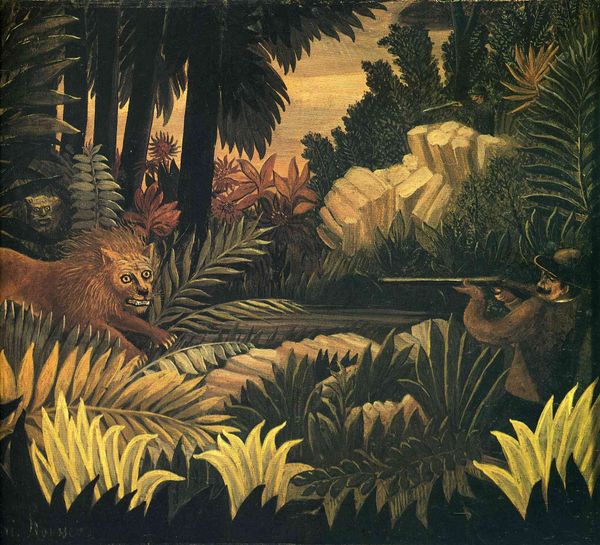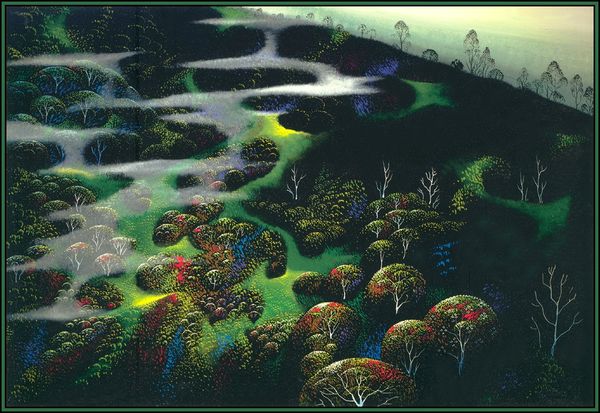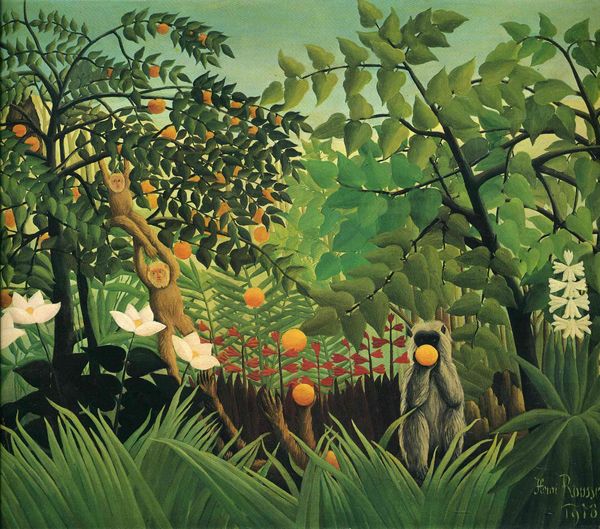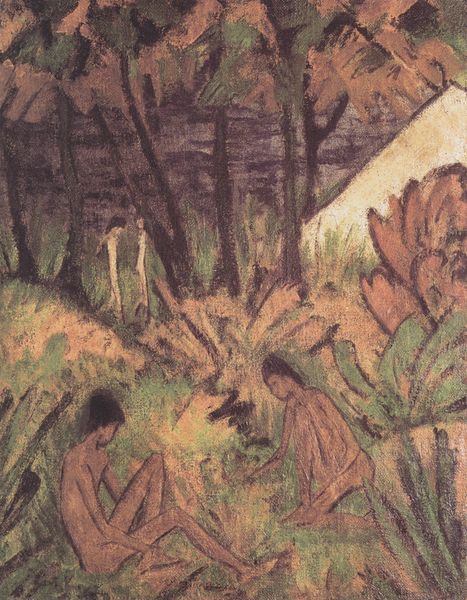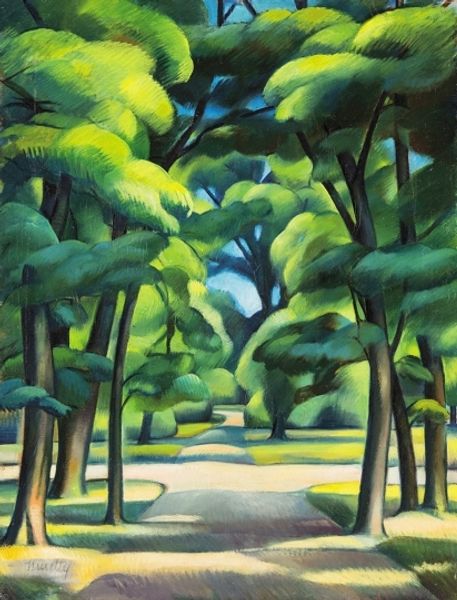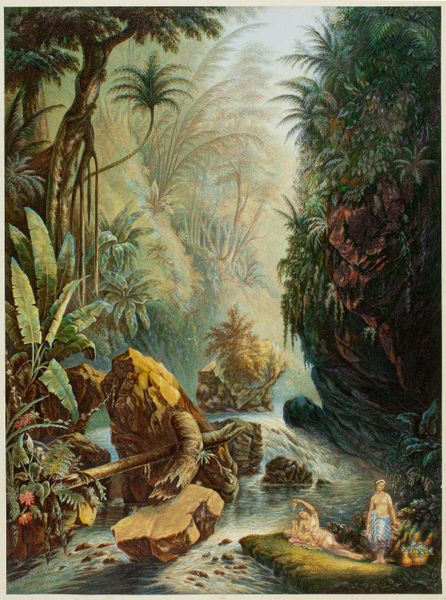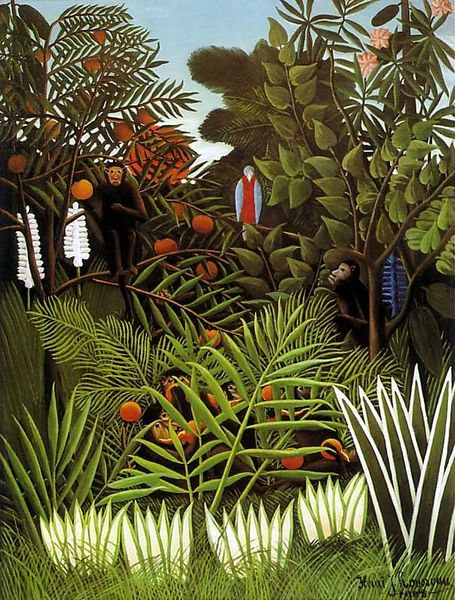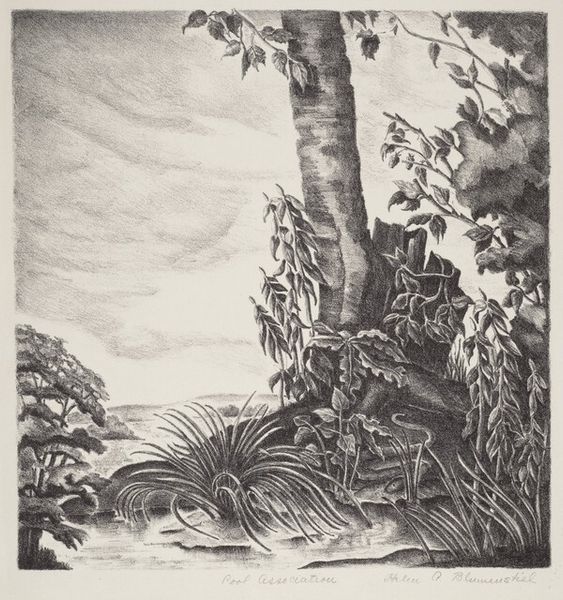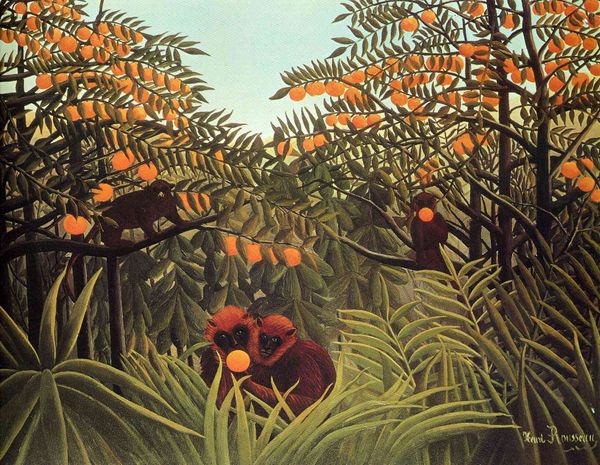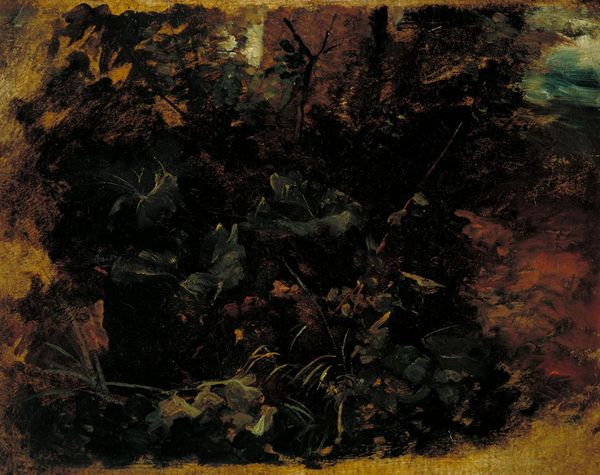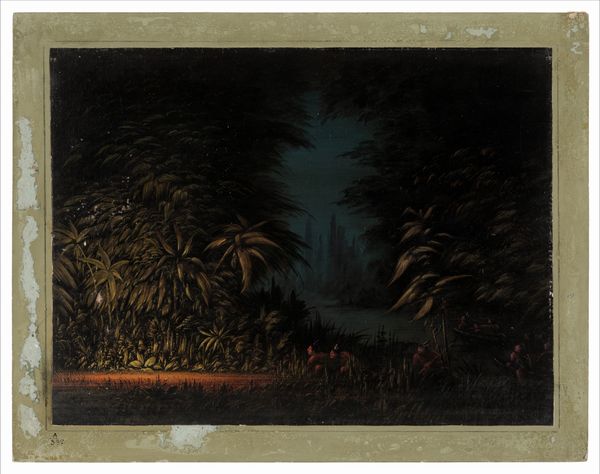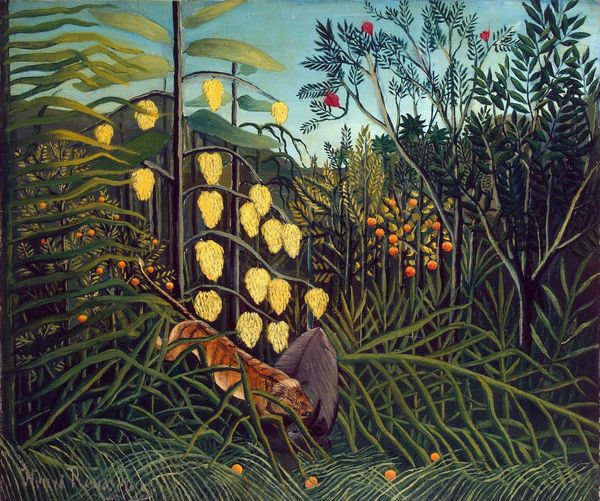
Copyright: Public domain
Curator: Here we have Theodor Severin Kittelsen's "Askeladdens Adventure. Golden Bird," created around 1900, using tempera on panel. Editor: It has this wonderfully dreamy, almost stage-lit quality. The composition is so dense with leaves, but that radiant gold just bursts through. Curator: Precisely! Note how the leaves are not simply green, but a complex arrangement of tones. See how the artist models forms using light and shadow; it creates depth even within the dense foliage. Editor: That burst of gold draws my eye, too. It represents the mythical bird, right? The quest object that holds so much symbolic weight in folklore? It becomes more than just an aesthetic choice. Curator: Exactly. And look how the light bleeds into the leaves, creating an almost pulsating, rhythmic pattern. This pattern works against any sort of conventional depth of field. What you perceive to be a real location begins to melt away as color and forms overtake any representational aspirations. Editor: The boy, Askeladden, is practically consumed by the foliage, isn’t he? Almost disappears into it as if the forest itself is a character in his adventure. Makes me wonder what the forest means in the story of this golden bird. Is it a place of danger? Of wonder? Curator: It functions on many levels. From a formal perspective, the vegetation serves as a crucial compositional element. Consider the textures; their application creates rhythm. He seems so embedded in nature that, arguably, we the viewers become even more distanced, made to feel more separate and objective by the contrast. Editor: I like the thought of how Kittelsen turns a familiar fairytale on its head. We're usually put in Askeladden's shoes as viewers, but here, we become outside observers of a deeply interior quest. Curator: Indeed, his application of the tempera lends this work an opacity, but it achieves complexity in the color mixing. Editor: What a striking way to bring a folk tale to life. By dimming the obvious symbols and enriching the environment surrounding it. Curator: A technique indeed successful, I think, for producing ambiguity between decoration and depiction, sign and ground. Editor: It invites me to reflect on the tales and environments that shaped my own understanding of possibility.
Comments
No comments
Be the first to comment and join the conversation on the ultimate creative platform.
